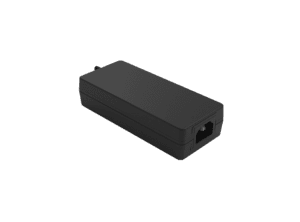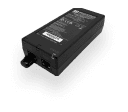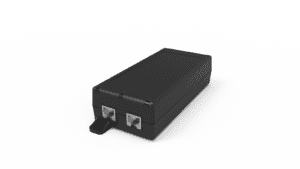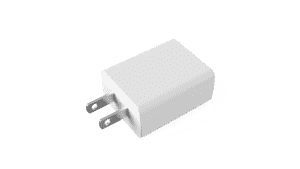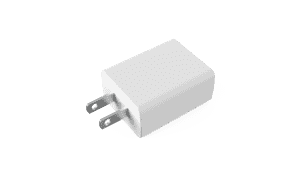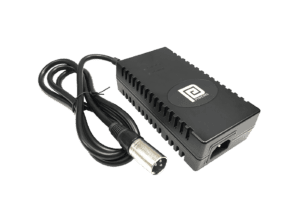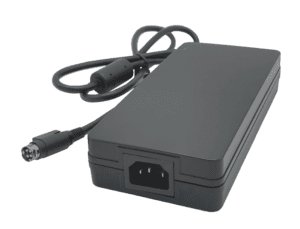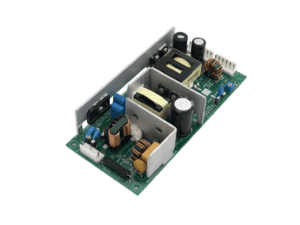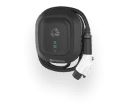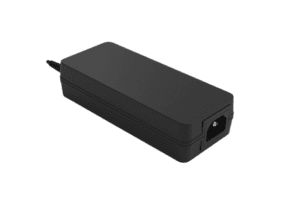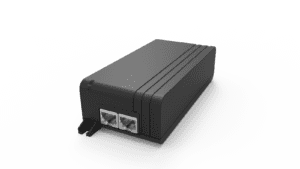BLOG
PoE Components: A Detailed Overview of Various Network Component Types
Table of contents

Power over Ethernet (PoE) technology has transformed the way we set up network devices by merging power and data transmission into a single Ethernet cable. This innovative solution streamlines installations, reduces expenses, and amplifies the versatility of network design. To make the most of PoE, it’s important to understand the key components that make up a PoE network system. This article offers an in-depth and detailed look at PoE components, their roles, and how they work together to create a reliable network.
What is Power Sourcing Equipment?
Power Sourcing Equipment (PSE) is the backbone of a PoE network. The PSE supplies power to PoE-enabled devices (PDs) by injecting power into the Ethernet cable. There are two main types of PSEs:
PoE Switches
PoE switches combine network switching and power sourcing all in one. They are available in two variants, managed and unmanaged:
Unmanaged PoE Switch: Unmanaged switches are simple and easy-to-use networking devices that work right out of the box. They automatically handle data paths between connected devices, making them a perfect choice for small networks, home offices, or any situation needing basic connectivity. With no complex setup required, unmanaged switches offer a cost-effective and reliable solution for connecting devices with minimal effort.
Managed PoE Switch: Managed switches provide advanced features like Virtual LANs (VLANs) for enhanced security and Quality of Service (QoS) to prioritize critical applications. They support remote monitoring and management through protocols like SNMP, making them ideal for large enterprises or data centers where network performance, control, and security are crucial. These switches offer the flexibility needed to meet complex networking needs and adapt to changing business demands.
Port Count: The number of ports in a PoE switch can vary significantly based on its design and intended use. Small office or home office models typically feature 4 to 8 ports, while mid-sized office switches often come with 12 to 24 ports. For larger enterprise environments, PoE switches may offer 48 ports or even more.
PoE switches can come in handy in some circumstances, however, there are drawbacks having a PoE switch:
- Cost: PoE switches typically cost more upfront than non-PoE switches, which may impact budget.
- Power Limits: Power is limited by the PoE standard (802.3af, 802.3at, or 802.3bt), affecting the devices you can power.
- Limited Total Power Budget: The switch has a maximum total power budget that can be shared among all PoE ports, potentially limiting the number of high-power devices you can connect.
- Heat: PoE switches may generate more heat, needing good ventilation and cooling.
- Compatibility: Ports on PoE switches are fixed to specific PoE standards, unlike PoE injectors.
PoE Injectors
Also known as midspans, are used when you have a non-PoE switch but still need to power PoE devices. They add power to the Ethernet cable after the network switch, allowing you to use existing network setups without upgrading to PoE switches. Injectors come in single-port and multi-port versions, supporting different power levels and standards. Here are some advantages PoE injectors bring to the table:
- Convenience: A PoE injector can easily convert a legacy switch to PoE.
- Cost-Effective: Affordable PoE injectors avoid replacing the entire non-PoE network.
- Easy Installation: Quick to install and integrate into existing setups.
- Reduced Downtime: Minimal disruption during upgrades.
- Easy Replacement: Single PoE injectors are simple to replace, unlike PoE switches which can disrupt the entire network.
- Power Flexibility: Multiple injectors with different standards can be used with a legacy switch, offering upgrade flexibility.
Single Port: Single-port PoE injectors are ideal for powering a single PoE device from a non-PoE switch. They are compact and straightforward, providing power to one device while maintaining the network’s integrity without requiring any additional configuration.
Multiport: Multi-port PoE injectors are designed to support multiple PoE devices simultaneously from a single unit. They are useful for setups where several devices need power and are connected to a non-PoE switch. These injectors offer flexibility and scalability, allowing for efficient power distribution to multiple devices through a single device.
Click Here to View Phihong’s PoE Injector Products!
What Are PoE Extenders?
PoE extenders are handy devices that extend the reach of a PoE network beyond the traditional 100-meter distance that Ethernet cables can go. They regenerate the power and data signals, allowing for longer cable runs without signal loss. They’re particularly handy for outdoor setups that require remote coverage such as parking lots, campuses or industrial facilities.
What Are PoE Splitters?
PoE splitters separate the power and data signals from a PoE-enabled Ethernet cable into separate outputs, enabling the connection of non-PoE devices. Splitters are great for upgrading to PoE while still supporting older devices that don’t natively support PoE. They come in various power ratings to match different device’s requirements.
What Powered Devices can be used for PoE?
Powered Devices (PDs) are the gadgets that receive power from the PSE. PDs include a wide range of networked devices, each designed for specific tasks. Common PDs include:
IP Cameras: IP cameras are popular for surveillance and security. PoE simplifies their installation by eliminating the need for separate power sources, making it easier to place them in locations without nearby power outlets.
Wireless Access Points (WAPs): WAPs provide Wi-Fi connectivity, essential for creating wireless networks in homes, offices, and public spaces. PoE-enabled WAPs benefit from centralized power management and easier installation in places without power outlets.
VoIP Phones: VoIP phones use PoE to receive power and data, making deployment in office environments more straightforward. PoE reduces cable clutter and enhances reliability by centralizing power delivery.
LED Lighting: PoE lighting systems use Ethernet cables to provide both power and data to LED light fixtures. This allows for advanced lighting control, energy efficiency, and simplified wiring compared to traditional electrical systems.
What Types of Ethernet Cables are Used in PoE?
Ethernet cables are the key player in PoE systems and the choice of cable can significantly impact the network’s performance and reliability. Key considerations for PoE network cables include:
Cable Type: Higher category cables (Cat5e, Cat6, Cat6a, and Cat7) offer better performance, including higher data rates and improved noise resistance. Cat6a and Cat7 cables are recommended for higher power PoE applications (up to 100W) to minimize voltage drop and heat buildup.
Cable Quality: High-quality cables with proper shielding and insulation reduce interference and ensure reliable power delivery. Shielded Twisted Pair (STP) cables provide additional protection against electromagnetic interference (EMI), which is important in environments with high electrical noise.
Cable Length: While standard Ethernet cables support lengths up to 100 meters, longer runs can lead to power loss and data signal degradation. PoE extenders can mitigate these issues, allowing for extended cable lengths while maintaining performance.
What Are the Roles of Connectors and Patch Panels in PoE Networks?
Connectors and patch panels are essential in a PoE network for organizing and managing cable connections. They ensure secure and reliable terminations, reducing the risk of connectivity issues. Key types include:
RJ45 Connectors: Standard RJ45 connectors are used to terminate Ethernet cables, providing a secure connection between devices and network equipment. High-quality connectors with proper shielding are recommended for PoE applications.
Patch Panels: Patch panels provide a centralized point for connecting and organizing Ethernet cables in a network rack. They simplify cable management, making it easier to troubleshoot and reconfigure the network. Patch panels with built-in PoE functionality can distribute power and data to connected devices.
Why Are Surge Protectors Important in PoE Networks?
Surge protectors safeguard PoE devices from electrical surges and spikes, which can cause damage and disrupt network operations. Surge protectors are particularly important in outdoor installations and areas prone to electrical disturbances. They are available in various configurations, including inline devices and rack-mounted units, providing protection for both data and power lines.
What Environmental Considerations Are Important for PoE Components?
Environmental considerations are not reserved for only outdoor PoE network installations. PoE components must be chosen with environmental factors in mind to ensure reliable operation. Key considerations include:
- Temperature: Extreme temperatures can affect the performance and lifespan of PoE devices. Industrial-grade PoE components are designed to operate in harsh environments, with extended temperature ranges and robust enclosures.
- Humidity: High humidity levels can lead to corrosion and short circuits. PoE devices with proper sealing and conformal coating are recommended for humid environments.
- Surge Protection: Outdoor and industrial installations are susceptible to surges caused by lightning and electrical equipment. Surge protection devices safeguard PoE components from these risks, ensuring continuous operation.
PoE Components Injector Ratings
Outdoor PoE components should be labeled with various Ingress Protection (IP) ratings, classifying the degree of protection provided by electrical enclosures against intrusion of contaminants such as water and dust. These ratings range from IP00 (zero protection) to IP68 (full protection) against internal contamination.
What Standards and Regulatory Compliance Apply to PoE Components?
Regulatory compliance and standards-based interoperability is crucial for ensuring the safety and performance of PoE networks. Key standards and certifications to consider include:
IEEE 802.3 Standards: The IEEE 802.3af, 802.3at, and 802.3bt standards define the power delivery and data transmission specifications for PoE. Compliance with these standards ensures interoperability and reliability.
UL, CE, and FCC Certifications: UL (Underwriters Laboratories), CE (Conformité Européenne), and FCC (Federal Communications Commission) certifications indicate that PoE components meet safety, performance, and regulatory standards. These certifications are essential for ensuring the safe and compliant operation of PoE networks.
RoHS Compliance: RoHS (Restriction of Hazardous Substances) compliance ensures that PoE components are free from hazardous materials, promoting environmental sustainability.
What Makes Phihong the Top Choice for PoE Components?
When it comes to power sourcing equipment and PoE accessories, Phihong offers the highest quality PoE solutions, embodying innovation and reliability. As a pioneer in the industry, Phihong has significantly contributed to the development of PoE standards, including at/bt, and remains actively involved in IEEE PoE committees. Phihong’s commitment to quality is evident in their rigorous testing processes and extensive product lineup, which includes not only PoE solutions but also AC/DC adapters, battery chargers, and medical power supplies.
Located in the heart of Silicon Valley, Phihong’s U.S. presence ensures quick logistics, local R&D capabilities, and responsive customer support. This proximity to major tech hubs enhances their ability to deliver tailored solutions and foster face-to-face collaborations, which are crucial for optimizing your network infrastructure.
By choosing Phihong, you partner with a company renowned for its legacy of quality and innovation. Whether you’re upgrading your enterprise network or exploring new applications, Phihong’s diverse range of power solutions is designed to meet the evolving demands of modern technology.
CLIENT'S QUOTE
Phihong's Power-Over-Ethernet solutions have transformed our network, boosting efficiency and reducing costs. Their seamless integration has simplified both installation and maintenance.
Explore More with Phihong USA
As we conclude our exploration of PoE technology, it’s clear that this field is experiencing unprecedented growth. For over 50 years, Phihong has been at the forefront of innovation, serving Fortune 500 companies across various industries as a leading power supply manufacturer for OEMs.
Phihong’s leadership, particularly in advanced technologies like Power over Ethernet, extends to active contributions in the development of IEEE PoE standards. This involvement underscores our commitment to innovation and dedication to providing cutting-edge power solutions that will shape the future of technology.
In addition to custom power supply solutions, Phihong offers a diverse range of products, including:
- Power over Ethernet (PoE) Solutions: PoE injectors, splitters, media converters, and more
- AC/DC Adapters and Power Supplies: USB adapters, desktop adapters, industrial-grade power supplies, and more
- Battery Chargers: Chargers for lithium-ion and lead-acid batteries
- Medical Power Supplies: Specialized power supplies that meet stringent healthcare requirements
By partnering with Phihong USA, you are choosing a trailblazer in power technology. If you’re an OEM looking for a custom PoE solution or just looking for a quality product, call us today: 510-445-0100 or email us at usasales@phihongusa.com. We look forward to collaborating with you.

Contact Our Team Today!
Our dedicated sales team and international partners are prepared to support you with your latest projects and initiatives globally.
FAQ
What are the benefits of using PoE technology in network setups?
Power over Ethernet (PoE) technology revolutionizes network setups by combining power and data transmission into a single Ethernet cable. This integration simplifies the installation process, eliminating the need for separate power supplies for network devices, which significantly reduces both the complexity and cost of network deployments. Additionally, PoE enhances the flexibility of network designs, allowing devices like IP cameras, wireless access points, and VoIP phones to be placed in locations where power outlets are not readily available. The result is a more versatile, cost-effective, and efficient network infrastructure.
Why is Phihong considered a top choice for PoE components?
Phihong is recognized as a leader in the PoE industry due to its commitment to quality, innovation, and reliability. The company has played a significant role in the development of PoE standards, including IEEE 802.3af, 802.3at, and 802.3bt, ensuring that their products meet the highest industry benchmarks. Phihong’s product lineup is extensive, offering a wide range of PoE solutions, including injectors, splitters, and power supplies, all of which undergo rigorous testing to ensure performance and safety. With a strong presence in the U.S., particularly in Silicon Valley, Phihong offers local R&D capabilities, responsive customer support, and quick logistics, making them a preferred choice for enterprises looking to optimize their network infrastructure with reliable and high-performance PoE components.
Which component streamlines the development of network automation applications?
The component that streamlines the development of network automation applications for PoE (Power over Ethernet) is the Simple Network Management Protocol (SNMP). SNMP provides a standardized way to monitor and manage network devices, including PoE-enabled equipment, by enabling automation of tasks such as power management, device configuration, and performance monitoring. This protocol allows developers to create applications that can efficiently control and automate PoE networks, improving overall system efficiency and reliability.

